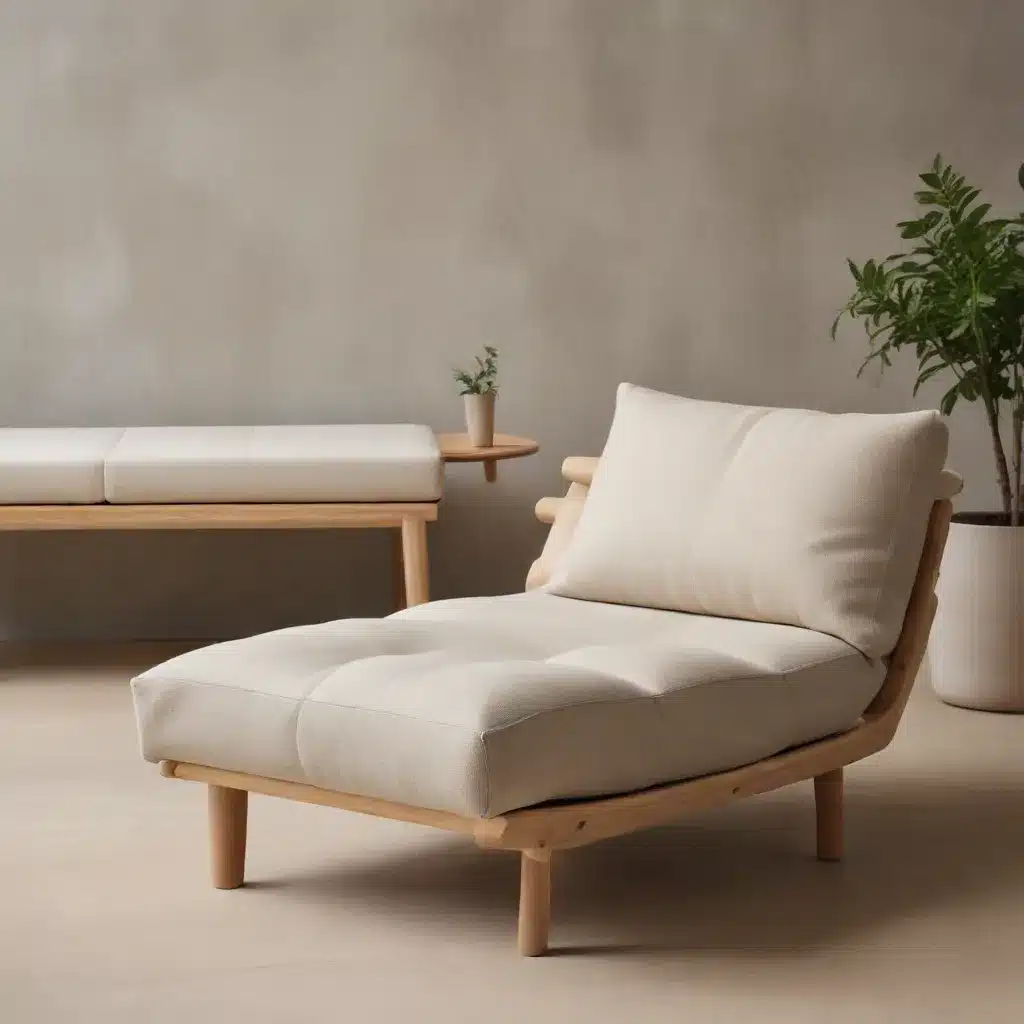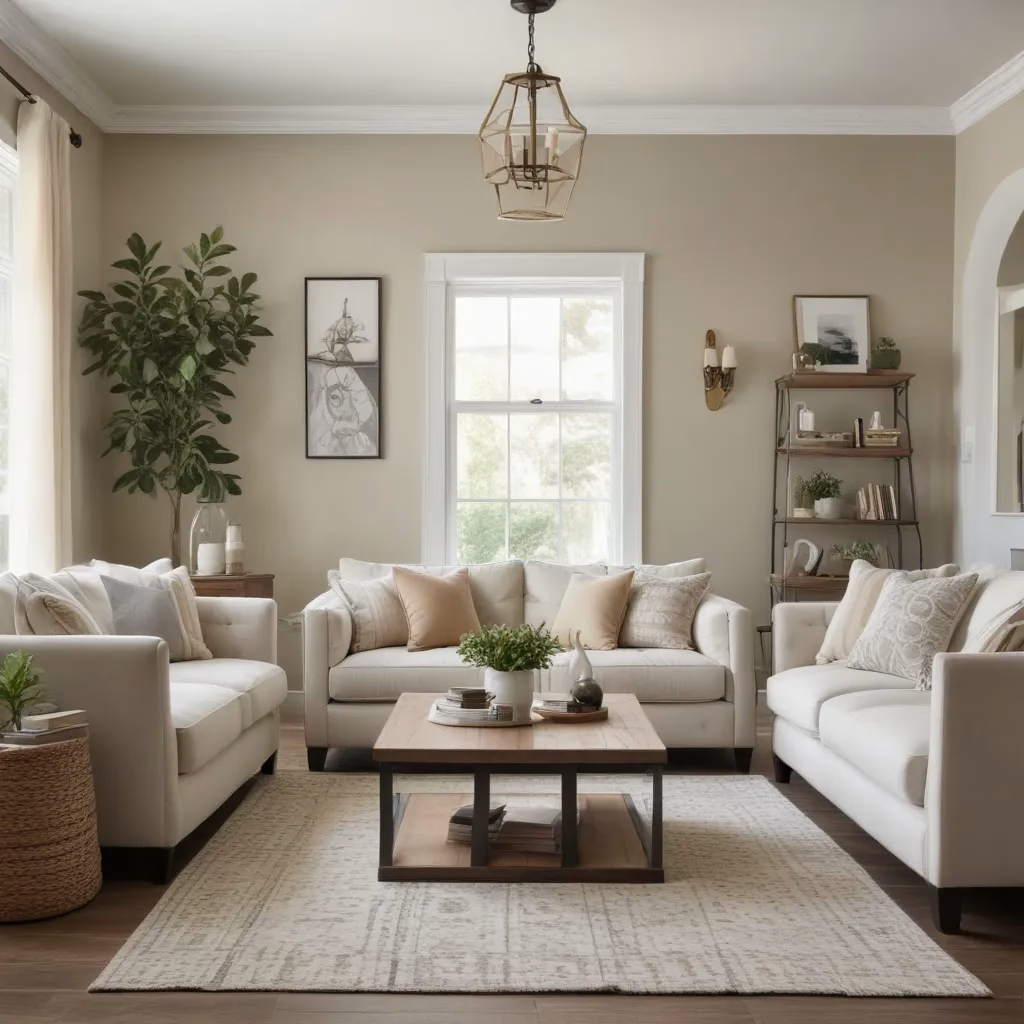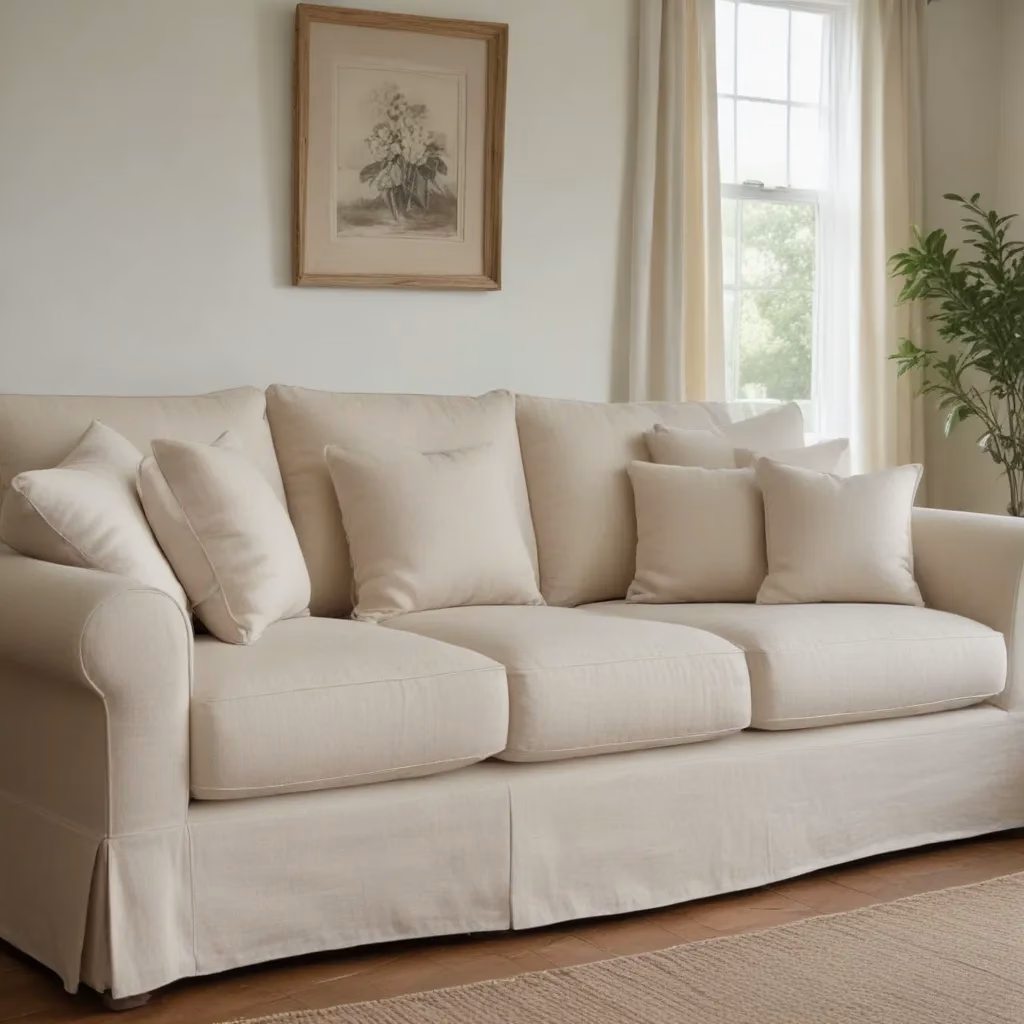
The Rise of Green Upholstery
As a furniture specialist with years of experience in the industry, I’ve witnessed a significant shift towards environmentally responsible choices in home furnishings. This trend is particularly evident in the realm of upholstery fabrics, where eco-friendly options are becoming increasingly popular among homeowners and designers alike.
The move towards sustainable seating isn’t just a passing fad; it’s a response to growing environmental concerns and a desire for healthier living spaces. Many of my clients are now asking for sofas and chairs that not only look good but also align with their values. They want to know that their furniture choices aren’t contributing to deforestation or releasing harmful chemicals into their homes.
What’s exciting about this shift is the innovation it’s spurring in the industry. Manufacturers are developing new materials and processes that reduce environmental impact without compromising on style or comfort. As someone who’s passionate about both design and sustainability, I find this development incredibly promising for the future of furniture.
Understanding Eco-Friendly Upholstery
When we talk about eco-friendly upholstery, we’re referring to fabrics and materials that have a lower environmental impact compared to traditional options. This can mean a few different things:
- Renewable Resources: Fabrics made from plants that grow quickly and require fewer resources, such as bamboo or hemp.
- Recycled Materials: Textiles created from post-consumer plastic bottles or other recycled content.
- Organic Fibers: Cotton, wool, or linen grown without the use of pesticides or harmful chemicals.
- Low-Impact Processing: Materials that are produced using methods that conserve water and energy.
In my experience, many clients are surprised to learn just how many options are available in the eco-friendly category. Gone are the days when “green” meant sacrificing style or comfort. Today’s sustainable fabrics can be just as luxurious and durable as their conventional counterparts.
One of the most rewarding aspects of my job is helping clients find upholstery that meets both their aesthetic preferences and their environmental standards. It’s a balance, but with the right knowledge, it’s entirely achievable.
Popular Eco-Friendly Fabric Options
Let’s take a closer look at some of the most popular eco-friendly fabric options I’ve been recommending to my clients:
Organic Cotton
Organic cotton is a perennial favorite for upholstery. It’s soft, breathable, and familiar to most people. What sets it apart from conventional cotton is the absence of harmful pesticides and fertilizers in its production. This makes it better for the environment and safer for your home.
I often suggest organic cotton for families with young children or those with sensitivities. It’s easy to clean and maintain, which is always a plus for busy households. Plus, it takes dyes well, so you’re not limited in color choices.
Recycled Polyester
Recycled polyester, often made from plastic bottles, is an excellent option for those looking for durability and easy maintenance. It’s resistant to stains and wrinkling, making it ideal for high-traffic areas or homes with pets.
What I love about recycled polyester is that it gives new life to materials that might otherwise end up in landfills. It’s a great example of how we can close the loop in manufacturing and reduce waste.
Hemp
Hemp is one of the most sustainable fibers available. It grows quickly without the need for pesticides and requires less water than many other crops. The resulting fabric is strong, durable, and naturally resistant to mold and mildew.
I’ve seen hemp used in both casual and formal settings. It has a slightly textured look that adds interest to upholstery. It’s also hypoallergenic, making it a good choice for those with allergies or sensitivities.
Caring for Eco-Friendly Upholstery
Proper care is essential for maintaining the longevity and appearance of any upholstery, but it’s particularly important for eco-friendly fabrics. Here are some tips I always share with my clients:
-
Regular Vacuuming: This prevents dirt from settling into the fibers. Use a soft brush attachment to avoid damaging the fabric.
-
Prompt Stain Treatment: Address spills immediately using a clean, damp cloth. Blot, don’t rub, to avoid spreading the stain.
-
Natural Cleaning Solutions: When possible, use gentle, non-toxic cleaners. A mixture of water and mild soap is often sufficient for most cleaning needs.
-
Professional Cleaning: Consider professional cleaning services that use eco-friendly methods for deep cleaning every 12-18 months.
-
Rotation: Rotate cushions regularly to ensure even wear and extend the life of your upholstery.
By following these simple steps, you can keep your eco-friendly upholstery looking great for years to come. This not only preserves the beauty of your furniture but also reduces the need for replacement, further minimizing environmental impact.
Combining Style and Sustainability
One question I often get from clients is whether they’ll have to compromise on style when choosing eco-friendly upholstery. The answer is a resounding no! The range of sustainable fabrics available today is vast and varied, allowing for plenty of creativity in design.
For example, I recently worked with a client who wanted a modern, sleek look for their living room but was committed to using sustainable materials. We ended up selecting a beautiful recycled polyester in a rich navy blue for their sofa. The fabric had a subtle sheen that added sophistication, and the deep color created a striking focal point in the room.
In another project, a client with a more bohemian aesthetic fell in love with a textured hemp fabric for their armchairs. We paired it with colorful, organic cotton throw pillows to create a warm, inviting seating area that perfectly reflected their style and values.
The key is to approach your design process with an open mind. You might be surprised by the innovative and beautiful options available in the world of sustainable upholstery.
The Impact of Choosing Eco-Friendly Fabrics
Opting for eco-friendly upholstery fabrics goes beyond just making your home look good. It’s a choice that can have far-reaching positive effects:
-
Reduced Chemical Exposure: Many conventional fabrics are treated with flame retardants and stain repellents that can off-gas harmful chemicals into your home. Eco-friendly options often avoid these treatments, leading to better indoor air quality.
-
Water Conservation: Sustainable fabrics often require less water in their production. For instance, organic cotton uses significantly less water than conventional cotton.
-
Energy Savings: Some eco-friendly fabrics are produced using renewable energy sources, reducing the overall carbon footprint of the furniture.
-
Waste Reduction: Recycled fabrics help divert materials from landfills, giving them a new life in your home.
-
Supporting Sustainable Practices: By choosing eco-friendly options, you’re sending a message to manufacturers that there’s a demand for sustainable products, encouraging further innovation in this area.
I always encourage my clients to consider these broader impacts when making their upholstery choices. It’s empowering to know that your furniture decisions can contribute to positive environmental change.
Challenges in Choosing Eco-Friendly Upholstery
While the benefits of eco-friendly upholstery are clear, it’s important to acknowledge that there can be some challenges in making this choice:
Cost Considerations
Eco-friendly fabrics can sometimes be more expensive than conventional options. This is often due to the higher cost of sustainable production methods and materials. However, I always remind my clients to consider the long-term value. These fabrics are often more durable, meaning they may need to be replaced less frequently, potentially saving money in the long run.
Limited Availability
While the range of eco-friendly options is growing, you may not find the exact color or pattern you’re looking for in a sustainable fabric. This can require some flexibility and creativity in your design process.
Performance Concerns
Some clients worry that eco-friendly fabrics won’t perform as well as conventional options. While it’s true that some sustainable fabrics may have different care requirements, many perform just as well, if not better, than their traditional counterparts.
Greenwashing
Unfortunately, some companies may exaggerate their environmental claims. It’s important to do your research and look for credible certifications when choosing eco-friendly upholstery.
Despite these challenges, I’ve found that most clients find the benefits of eco-friendly upholstery far outweigh the drawbacks. With a little patience and the right guidance, it’s possible to find sustainable options that meet both your aesthetic and functional needs.
The Future of Eco-Friendly Upholstery
As someone who’s been in the furniture industry for years, I’m excited about the future of eco-friendly upholstery. The innovations I’m seeing are truly impressive:
Advanced Recycling Technologies
New technologies are making it possible to recycle a wider range of materials into high-quality fabrics. For example, some companies are now able to turn ocean plastic into durable, attractive upholstery fabrics.
Bio-Based Synthetics
Scientists are developing synthetic fabrics made from renewable resources like corn or sugarcane. These materials have the potential to offer the performance benefits of traditional synthetics with a much lower environmental impact.
Circular Design
More furniture companies are adopting circular design principles, creating products that can be easily disassembled and recycled at the end of their life. This approach extends to upholstery, with some fabrics now designed to be fully biodegradable or recyclable.
Improved Performance
Ongoing research is enhancing the performance of eco-friendly fabrics. We’re seeing sustainable options that are increasingly stain-resistant, durable, and easy to clean, addressing some of the concerns that have held people back from choosing these materials in the past.
Greater Transparency
There’s a growing push for transparency in the furniture industry. More companies are providing detailed information about their materials and production processes, making it easier for consumers to make informed choices.
These developments suggest that eco-friendly upholstery will become increasingly accessible and appealing in the coming years. It’s an exciting time to be in this field, and I look forward to seeing how these innovations will shape the future of furniture design.
Making the Switch to Eco-Friendly Upholstery
If you’re considering making the switch to eco-friendly upholstery, here are some steps I recommend:
-
Assess Your Needs: Consider your lifestyle, aesthetic preferences, and any specific requirements (like pet-friendly or child-proof fabrics).
-
Do Your Research: Look into different eco-friendly fabric options and their characteristics. Understanding the pros and cons of each will help you make an informed decision.
-
Request Samples: If possible, get fabric samples to see and feel the materials in person. This can help you gauge comfort and quality.
-
Consider Certifications: Look for reputable eco-certifications like GOTS (Global Organic Textile Standard) or Oeko-Tex Standard 100.
-
Think Long-Term: Consider the longevity of the fabric. A high-quality, durable eco-friendly fabric might be more cost-effective in the long run, even if it’s more expensive upfront.
-
Start Small: If you’re hesitant about making a big change, start with smaller pieces like throw pillows or an ottoman before committing to a larger item like a sofa.
-
Consult a Professional: A furniture specialist or interior designer with experience in sustainable materials can provide valuable guidance and help you find options that meet your needs.
Remember, every small step towards sustainability makes a difference. Even if you can’t switch all your furniture to eco-friendly options at once, making conscious choices when you do make purchases can have a positive impact.
Conclusion
The world of eco-friendly upholstery is rich with possibilities. From organic cotton to innovative recycled materials, there are options to suit every style and need. While there may be some challenges in making the switch, the benefits – both for your home and for the environment – are significant.
As a furniture specialist, I’m continually impressed by the advancements in this field and excited about the future of sustainable seating. Whether you’re furnishing a new home or looking to update your existing spaces, consider exploring eco-friendly upholstery options. You might be surprised by how easily you can combine style, comfort, and sustainability.
Remember, every choice we make in our homes can have an impact beyond our four walls. By opting for eco-friendly upholstery, you’re not just creating a beautiful living space – you’re also contributing to a healthier planet. And that’s something we can all feel good about sitting on.
For more information on sustainable furniture options and expert advice on choosing the right pieces for your home, visit Sofa Spectacular. We’re here to help you create a beautiful, comfortable, and environmentally responsible living space.



